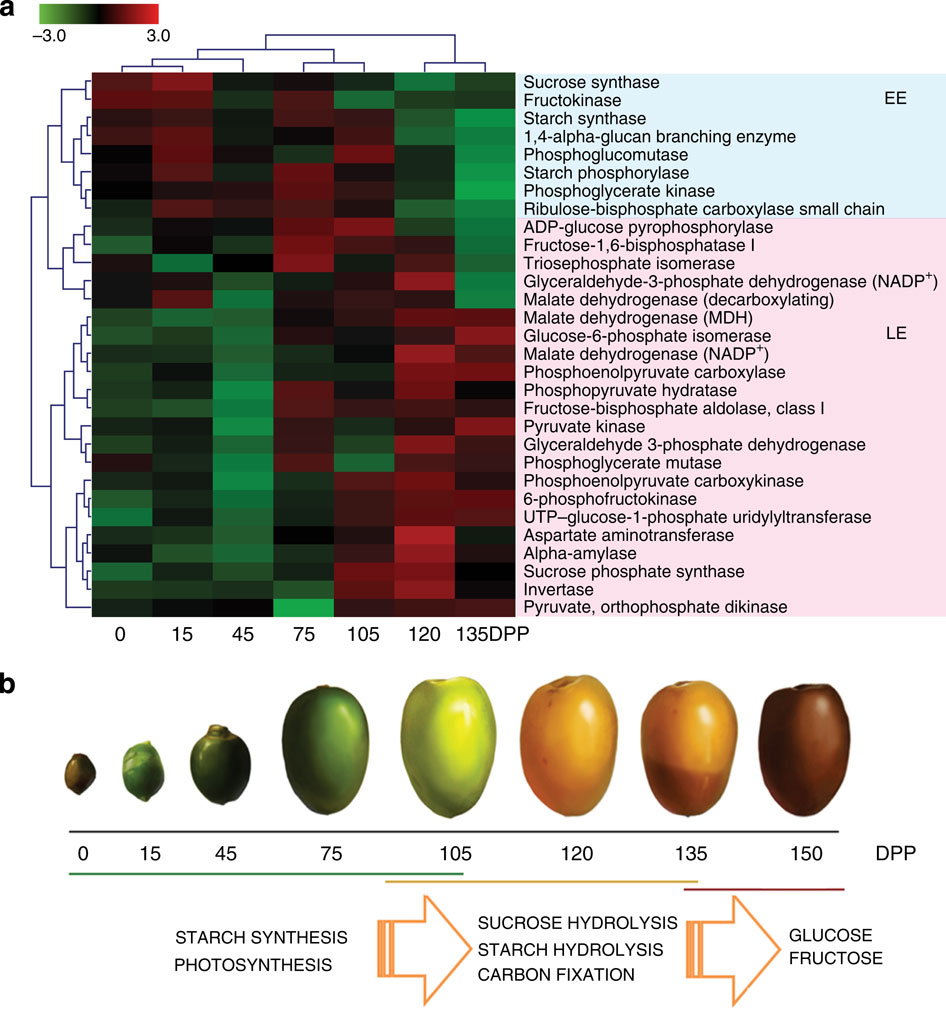Genome Sequencing and Functional Research of Date Palm
Date palm is the main crop which is widely planted in the Middle East and North Africa with great economic values. Besides, the palmae, to which date palm belongs, is in a special taxonomic status with various species and wide distributions. In order to uncover the molecular mechanisms of the yield, reproduction and stress-resistance of date palm, collaborative efforts from both Saudi and Chinese scientists firstly carried out date palm genome sequencing.
The research team led by Prof.YU Jun and HU Songnian from Beijing Institute of Genomics(BIG), Chinese Academy of Sciences completed the sequencing and assembly of a high quality genome of the main cultivar Khalas as well as the draft of another three date palm strains.
The assembled genome of Khalas is about 605.4Mb, accounts for more than 90% of the whole genome sequence (~671 Mb) and no less than 96% (41,660) date palm genes. Comprehensive analysis reveals that the genome has undergone a significant genome-wide duplication (GWD) as well as a potential GWD or a wide range of genomic fragment duplication. Genetic variation analysis shows that stress-resistant genes and sugar metabolism-related genes tend to be concentrated in low SNP areas in the chromosome.
Take advantage of high-throughput transcriptome data, scientists clarified the unique difference in sugar metabolism during the development and maturation of the date palm fruits. Large-scale genomic and transcriptome data lay a foundation for further studies on date palm genome and other palmae species. In addition, this study also reported the first chloroplast genome sequence of palmae, which paves the road for understanding the structure characteristics of date palm chloroplast genome and the genome variation in the process of evolution.
YU Jun, the chief scientist of this project and the professor of BIG said, the genome of Khalas is assembled in a high quality, resolves the date palm gene expression profile from flowering to maturation and reveals several crucial turning points of the polysaccharide metabolic pathway. These results are highly valued in application and will play important roles in date palm genomics as well as other omics studies. In addition, this article also reported for the first time the difference of repetitive sequence families in plant genome within and between different lineages.
Phoenix Dactylifera L. Genome Project was officially launched in the summer of 2008, which was supported jointly by BIG and King Abdulaziz City for Science and Technology (KACST). The purposes of this project are to establish close cooperation with the scientific community of Saudi kingdom and to build a systematic genomic research platform.
Bases on this platform, scientists from both countries can cooperatively carry out genome sequencing and comparative genomics researches in human genetics and disease genomics, palmae plant (date palms, coconuts, oil palms, etc.), important crops (such as rice, osmanthus), drought-resistant plants in desert, environmental microbes in oil well, etc.
The work was published on Nature Communications.

Expression profiling of sugar metabolism-related genes at different fruiting stages.
(Image by Ibrahim S. Al-Mssallem et al.)
CONTACT:
Prof. YU Jun & Prof. HU Songnian
Email: junyu@big.ac.cn;